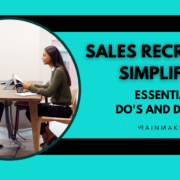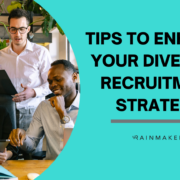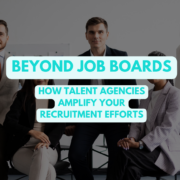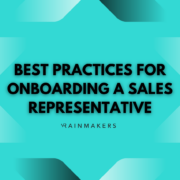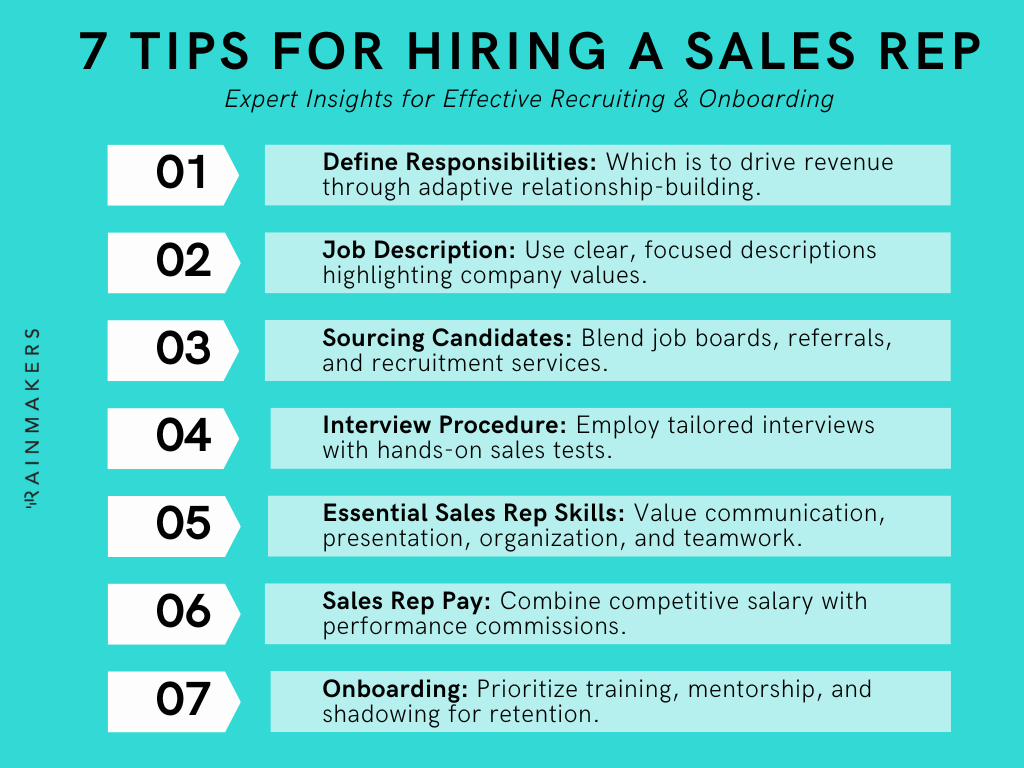Advanced Strategies for HR Teams
At Rainmakers, we understand that social media is not just a platform for social interactions but a powerful recruitment arsenal in this digital era. It offers an unparalleled opportunity to reach, engage, and attract top-tier talent in innovative and impactful ways.
We have seen how effectively these platforms can bridge the gap between dynamic companies and exceptional candidates. In this rapidly changing job market, where traditional recruitment methods are continually redefined, social media emerges as a critical channel for discovering and engaging with potential employees.
Cultivating an Intriguing Employer Brand
Your organization’s social media presence directly reflects its culture and principles.
Curating content that informs and resonates with your target audience is crucial. Share insights into your company’s work environment, celebrate employee milestones, and showcase community and CSR initiatives.
This approach helps build a narrative that goes beyond job descriptions, portraying a workplace where people can thrive and contribute meaningfully.
Identifying the Ideal Platforms
To optimize social media recruitment, it’s important to choose platforms that align with your industry and the nature of the roles you’re filling.
- Facebook, with its extensive user base, is ideal for a wide spectrum of industries, from retail to customer service, offering a broad reach and diverse audience.
- Instagram, known for its visual appeal, is particularly effective for roles in creative industries like fashion, graphic design, and photography.
- X’s real-time communication and hashtag-driven content is excellent for engaging media, journalism, and tech professionals.
- YouTube is a valuable platform for attracting talent in digital marketing, tech, and multimedia content creation.
Each platform caters to specific professional demographics, making them suitable for targeted talent acquisition strategies.
Using Employees as Brand Ambassadors
Employees are the most authentic and credible advocates for your company culture and can significantly enhance your employer brand. Sharing their positive experiences and the benefits of working at your company adds a genuine perspective that potential candidates find relatable and trustworthy. This approach broadens the reach of your job openings and provides a real-life glimpse into what it’s like to work at your organization.
To maximize the effectiveness of using employees as brand ambassadors, consider implementing a structured employee advocacy program. Start by providing training or resources to help employees craft compelling messages about their work experiences. Encourage them to share news about company achievements, workplace culture, and community involvement on their social media channels. Recognize and reward employees who actively participate in promoting the company, as this can motivate others to do the same. This can include formal recognition programs or even casual shout-outs in internal meetings.
Additionally, create easy-to-share content like graphics, blog posts, or videos that employees can use. You can also involve them in creating content, such as employee testimonials or day-in-the-life videos, which offer an authentic view of the company culture. Regularly update your team on new job openings and provide them with succinct, engaging descriptions they can share in their networks. This not only aids in recruitment but also fosters a sense of pride and ownership among your workforce, further strengthening your employer brand.
By actively involving your employees in your branding and recruitment efforts, you create a powerful, multi-channel approach that can significantly enhance your ability to attract top talent.
Maximizing LinkedIn Job Posts
Creating effective job posts on social media and leveraging networking platforms like LinkedIn are crucial in attracting top talent. Here’s how to combine these strategies effectively:
- Balanced and Engaging Job Posts:
- Aim for a blend of informativeness and engagement in your job posts.
- Use eye-catching visuals and concise, impactful language to draw attention.
- Highlight unique aspects of your company, such as innovative work practices, employee wellness programs, or growth opportunities, to stand out.
- Active Engagement on Networking Platforms:
- Maintain an active presence on platforms like LinkedIn with regular updates and thought leadership posts.
- Share industry news and insights to establish your company as a leader in its field.
- Engage with potential candidates through content, group discussions, and personalized outreach to convert passive viewers into active job applicants.
By integrating these approaches, you can craft job posts that inform and captivate potential applicants.
Engaging with Passive Candidates
One of the greatest advantages of social media is its ability to reach passive candidates – those not.
Social media excels in reaching out to passive candidates who may not be actively seeking new roles but are open to exciting opportunities. Engaging these individuals is crucial and can be effectively done through sharing relevant content, recognizing their professional achievements, or inviting them to industry-specific webinars, thereby nurturing their interest in your organization.
Simultaneously, it’s crucial to recognize that social media efforts shouldn’t stand alone but rather be a part of a broader recruitment strategy.
This approach involves blending social media’s dynamic capabilities with the reliability of common recruitment methods. Such a cohesive strategy ensures a versatile and comprehensive approach to attracting the best talent, allowing for a more effective and encompassing talent acquisition process.
Ethical Considerations in Social Media Background Checks
Using social media for candidate background checks requires careful ethical and legal navigation. Specifically, it’s important to keep in mind the following:
- Respect Privacy: Avoid private or restricted areas of a candidate’s profile and consider getting consent for background checks.
- Legal Compliance: Ensure adherence to relevant laws like the Fair Credit Reporting Act (FCRA) or GDPR, depending on your location.
- Avoid Bias: Focus on job-relevant information to prevent discrimination based on personal attributes.
- Transparent Practices: Maintaining transparency with candidates about using social media in hiring.
By adhering to these guidelines, HR teams can ethically integrate social media into their recruitment processes, balancing insightful screening with respect for candidate privacy and rights.
Need Professional Help?
From building an engaging employer brand to identifying the ideal platforms for different industries, and from harnessing the authentic voices of employees as brand ambassadors to ethical considerations in background checks, social media stands as an indispensable tool in modern talent acquisition.
By integrating these digital strategies with traditional recruitment methods, companies can create a robust, dynamic approach to talent acquisition.
If you need assistance building your sales team, create a free profile with Rainmakers and start connecting with top talent.








